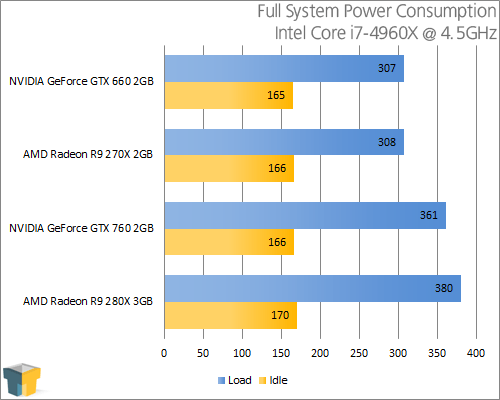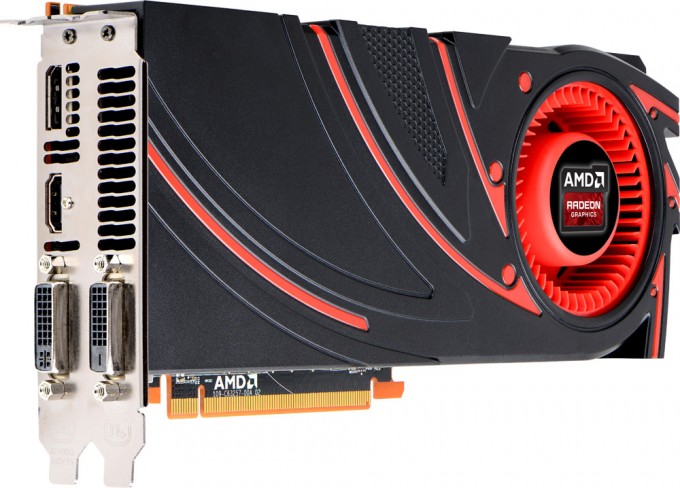- Qualcomm Launches Snapdragon 4 Gen 2 Mobile Platform
- AMD Launches Ryzen PRO 7000 Series Mobile & Desktop Platform
- Intel Launches Sleek Single-Slot Arc Pro A60 Workstation Graphics Card
- NVIDIA Announces Latest Ada Lovelace Additions: GeForce RTX 4060 Ti & RTX 4060
- Maxon Redshift With AMD Radeon GPU Rendering Support Now Available
AMD Radeon R9 270X Graphics Card Review

We took AMD’s $300 Radeon R9 280X for a spin last week and were left quite impressed overall with the results, versus the GTX 760. Will we get the same sort of reaction with the company’s Radeon R9 270X? With the help of NVIDIA’s ~$175 GeForce GTX 660, we’re going to find that out.
Page 8 – Temperatures, Power & Final Thoughts
To test graphics cards for both their power consumption and temperature at load, we utilize a couple of different tools. On the hardware side, we use a trusty Kill-a-Watt power monitor which our GPU test machine plugs into directly. For software, we use Futuremark’s 3DMark to stress-test the card, and AIDA64 to monitor and record the temperatures.
To test, the general area around the chassis is checked with a temperature gun, with the average temperature recorded. Once that’s established, the PC is turned on and left to site idle for ten minutes. At this point, AIDA64 is opened along with 3DMark. We then kick-off a full suite run, and pay attention to the Kill-a-Watt when the test reaches its most intensive interval (GT 1) to get the load wattage.


In our BioShock Infinite result, we saw the 270X and GTX 660 come 1:1 with each other in performance, and now, we see much of the same thing with the wattage – give or take a single watt. Temperature-wise, the GTX 660 cleans house, but it had a better cooler than AMD’s reference (it’s pictured here).
Final Thoughts
AMD’s Radeon R9 270X is an interesting card, and quite the value @ its $200 price point. That value would be far more pronounced had NVIDIA not recently dropped the pricing on its GTX 660 series (which, of course, was to be expected). At this point in time, the GTX 660 can easily be had for $175 (even the exact model we used in our benchmarking), so is AMD’s offering worth the extra?

The R9 270X is faster than the GTX 660 – there’s no denying that. In some cases, it even kept right up to the $50 more expensive GTX 760 – especially with our multi-monitor testing. It has to be noted, however, that in some cases the 270X didn’t excel at all in its battle against the GTX 660. In BioShock Infinite and Battlefield 3, both cards came out about 1:1. That’s rather interesting, because quite simply, it was a little difficult to predict whether the 270X was going to dominate or match the GTX 660 in any given test.
In the grand scheme, with NVIDIA’s GTX 660 @ $175 (select models) and AMD’s 270X @ a definitive $199 for the time-being, both cards scale well in performance based on their pricing. At this point, it’s just hard to go wrong with either. Had NVIDIA kept the GTX 660 @ $200, AMD would have looked like the true king-of-the-hill. NVIDIA’s move sucks for AMD, but it’s fantastic for consumers.
Support our efforts! With ad revenue at an all-time low for written websites, we're relying more than ever on reader support to help us continue putting so much effort into this type of content. You can support us by becoming a Patron, or by using our Amazon shopping affiliate links listed through our articles. Thanks for your support!





